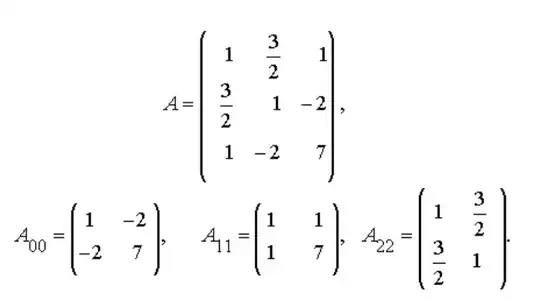Jan-Magnus Økland's answer
gives a beautiful and memorable big determinant formula.
Now, big determinants are great as long as you do not need to expand them;
otherwise a formula with smaller determinants might be preferable.
Here is one.
Let $\color{blue}{P}=(x,y)$, $P_i=(x_i,y_i)$ and
$$\langle P_i,P_j,P_k\rangle = \begin{vmatrix}
x_i & x_j & x_k \\ y_i & y_j & y_k \\ 1 & 1 & 1
\end{vmatrix}
= \begin{vmatrix} x_j & x_k \\ y_j & y_k \end{vmatrix}
+ \begin{vmatrix} x_k & x_i \\ y_k & y_i \end{vmatrix}
+ \begin{vmatrix} x_i & x_j \\ y_i & y_j \end{vmatrix}$$
Then the conic through $P_1,\ldots,P_5$ can be described as
$$\begin{align}
\langle P_1,P_3,P_5\rangle \langle P_2,P_4,P_5\rangle
\langle P_1,P_2,\color{blue}{P}\rangle
\langle P_3,P_4,\color{blue}{P}\rangle
\\{} - \langle P_1,P_3,\color{blue}{P}\rangle
\langle P_2,P_4,\color{blue}{P}\rangle
\langle P_1,P_2,P_5\rangle \langle P_3,P_4,P_5\rangle
&= 0 \tag{1}
\end{align}$$
The proof strategy is the same as indicated in
Jan-Magnus Økland's comment:
The equation is of total degree at most $2$ in $x,y$
and fulfilled for $\color{blue}{P}\in\{P_1,\ldots,P_5\}$.
As to where this equation comes from:
There is a nice way to parametrize the family of conics through four given
points: The ratio
$$ \langle P_1,P_2,\color{blue}{P}\rangle \langle P_3,P_4,\color{blue}{P}\rangle
: \langle P_1,P_3,\color{blue}{P}\rangle \langle P_2,P_4,\color{blue}{P}\rangle$$
is constant for each conic.
Giving a fifth point determines that constant except in
some cases of collinearity. Equation $(1)$ is the result.


